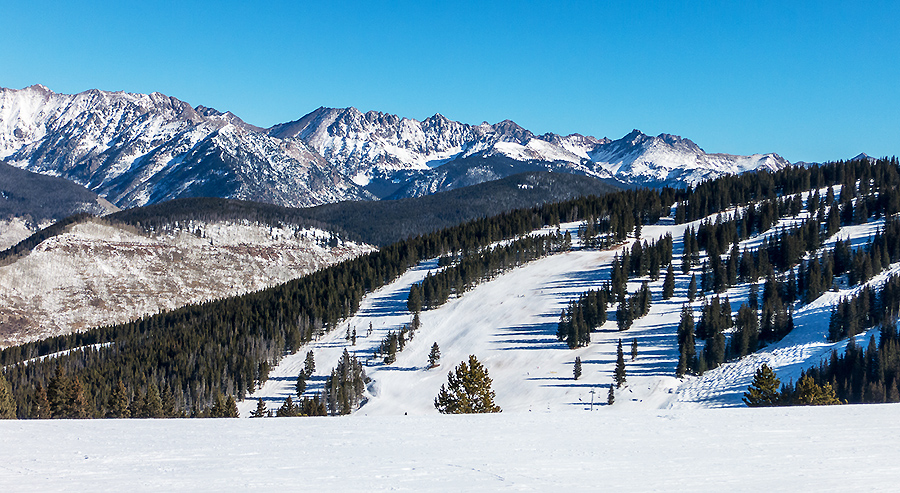Vail Resorts, Inc. is reporting that season-to-date (STD) total skier visits were down 7.8 percent compared to the prior-year STD period. Season-to-date total lift ticket revenue, including an allocated portion of season pass revenue for each applicable period, was up 3.2 percent compared to the prior-year STD period.
Season-to-date ski school revenue was up 7.0 percent and dining revenue was up 2.4 percent compared to the prior-year STD period. Retail/rental revenue for North American resort and ski area store locations was down 7.1 percent compared to the prior-year STD period.
Vail said the reported ski season metrics are for the periods from the beginning of the current ski season through April 14, 2024, and for the prior-year period through April 16, 2023. The reported ski season metrics are said to be for the company’s North American destination mountain resorts and regional ski areas, excluding the results of the Australian ski areas and Andermatt-Sedrun in both periods.
“Given the unfavorable conditions across our North American resorts for a large portion of the season, we are pleased with our overall results as the 2023/2024 North American ski season nears completion, highlighting the stability provided by our season pass program and the investments we have made in our resorts and employees,” offered company CEO Kirsten Lynch. “While visitation declined, our lift revenue increased driven by the growth in pass sales committed ahead of the season, and our ancillary businesses performed well, with particularly strong growth in spending per visit in our ski and ride school, dining, and rental businesses compared to the same period in the prior year. The results throughout the 2023/2024 North American ski season demonstrate the resiliency of our strategic business model and our network of resorts and loyal guests.”
Lynch said that results in March and April improved compared to the season-to-date period through March 3, 2024, as expected, with March and April visitation across the company’s western North American resorts exceeding prior-year record levels supported by the improved conditions.
“Pass product visitation returned as expected to normal historical guest behavior for the spring,” she added. “However, lift ticket visitation did not return to normal historical guest behavior, primarily at Whistler Blackcomb, which was down significantly relative to the prior year period. As noted in the March earnings release, the challenging early season conditions at Whistler Blackcomb and our Tahoe resorts persisted through early March. When conditions improved, visitation at our Tahoe resorts responded as expected, however visitation at Whistler Blackcomb remained below expectations.”
Looking ahead to results for fiscal 2024, Lynch said, “While late season results improved, we now expect to finish the year at or around the low end of our Resort Reported EBITDA guidance range issued on March 11, 2024, primarily driven by Whistler Blackcomb performance in the March and April period. Our strong season pass sales results, prior to the start of this season, greatly mitigated the impact of the unfavorable conditions that existed across our North American resorts for a large portion of the season, highlighting the stability created by our advance commitment strategy.”
Commenting on spring season pass sales, Lynch continued, “Our attention is already turning to the 2024/2025 season, with spring pass sales underway. To date, through the April deadline, we have seen a modest decline in pass product units and growth in sales dollars. The April sales deadline only impacts a portion of our renewing pass holders that are eligible for buddy ticket benefits, and we will have more to share in our third quarter earnings release in June 2024.”
Basis of Presentation
The reported ski season metrics include growth for season pass revenue based on estimated fiscal 2024 North American season pass revenue compared to fiscal 2023 North American season pass revenue. The metrics include all North American destination mountain resorts and regional ski areas, and are adjusted to eliminate the impact of foreign currency by applying current period exchange rates to the prior period for Whistler Blackcomb’s results. “Eastern” U.S. resorts collectively refers to the 26 Midwest, Mid-Atlantic and Northeast resorts.
The data mentioned in this release is interim period data and is subject to fiscal quarter end review and adjustments.













